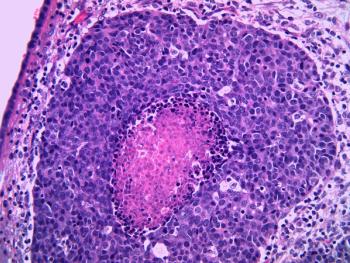
Bridging to Warfarin with Heparin in Atrial Fibrillation Isn't Necessary, May Be Harmful
Little information exists regarding the benefit of bridging warfarin among patients with atrial fibrillation. The best available evidence suggests that this common practice may increase the risk of bleeding without providing any efficacy benefit.
The idea of bridging to warfarin using heparin or a low molecular weight heparin (LMWH, such as enoxaparin) is deeply engrained in pharmacy students and medical residents early in their education. Due to an initial prothrombotic state and a delayed onset of anticoagulation, warfarin is commonly “bridged” with parenteral anticoagulants until full anticoagulation is achieved. Among patients with atrial fibrillation with an elevated CHA2DS2-VASc score who are selected for warfarin, it seems logical to implement a heparin or LMWH “bridge” until an internal normalizing ratio (INR) goal of 2 to 3 is achieved; however, not only is this practice unnecessary, it may actually be harmful to patients.
The Need for Bridging Warfarin in Patients with Venous Thromboembolism (VTE)
When warfarin is used to treat an acute deep vein thrombosis (DVT) or pulmonary embolism (PE), a bridge with a parenteral anticoagulant is absolutely necessary for 2 reasons:
- Warfarin takes about 5 days to achieve full anticoagulation (INR above 2).
- During the first few days of warfarin therapy, patients are prothrombotic due to a decrease in protein C and S (natural anticoagulants) before thrombin levels diminish significantly.
The necessity of warfarin bridging was best described in a 1992 article comparing heparin bridging versus no bridging among patients receiving warfarin for a DVT.1 Within the first 7 days of initiating warfarin, patients without a heparin bridge were much more likely to have an extension of their DVT or a new PE versus those with a bridge (39.6% vs 8.2%). On the basis of this trial, only 3 patients would need to receive a heparin bridge in order for one patient to not have a worsening of his or her DVT or experience a new PE.
Warfarin Anticoagulation Among Patients with Atrial Fibrillation
In atrial fibrillation, the 2014 AHA/ACC/HRS guidelines recommend either warfarin (class IA) or a DOAC (class IB) among patients with a CHA2DS2-VASc score of 2 or more.2 Among patients with atrial fibrillation, these anticoagulants are recommended to decrease the long-term risk of embolic stroke caused by blood stasis on the left side of the heart, primarily in the left atrium.
The CHA2DS2-VASc scoring system provides an estimate of the risk of stroke or thrombotic embolism per year.3 For example, a CHA2DS2-VASc score of 2 correlates to a risk of approximately 2.2%, whereas the maximum score of 9 corresponds to an annual risk of 15.2%. If these risks were extrapolated to a 5-day period (the typical duration of warfarin onset), the risk is actually surprisingly small (0.03% to 0.2%). Given the very small risk of stroke during a 5-day period, the necessity of bridging to warfarin in patients with atrial fibrillation becomes more questionable.
The 2014 Atrial Fibrillation Guidelines Don't Provide Clear Guidance
The 2014 atrial fibrillation guidelines recommend bridging to warfarin among patients with mechanical valves, but they provide little guidance for all other patients aside from emphasizing the balance between the risk of stroke and bleeding in the decision-making process.2 Given the paucity of data regarding the necessity to bridge to warfarin, the lack of a recommendation within the guidelines shouldn’t be surprising.
Data Extrapolation from the BRIDGE Trial
The BRIDGE trial was designed to answer the question of whether bridging warfarin with an LMWH is necessary among patients with atrial fibrillation who needed temporary interruption of warfarin therapy for a surgical procedure.4 All 1884 patients in the study were instructed to stop warfarin 5 days prior to the procedure, and then patients were randomized to either receive dalteparin (an LMWH) or placebo starting 3 days prior to the procedure. In both groups, warfarin was resumed within 24 hours after the procedure. Importantly, the mean CHADS2 score was 2.3, representing a low-to-moderate risk of embolic stroke.
The results of the BRIDGE trial demonstrated there was no difference in thromboembolism (such as stroke) between those receiving an LMWH bridge and those without any bridge at all (0.3% vs 0.4%). In contrast, however, patients randomized to receive a LMWH bridge were much more likely to experience major bleeding than those without a bridge (3.2% vs 1.3%).
Although the BRIDGE trial studied the necessity of bridging warfarin due to an interruption of therapy for a surgical procedure (and not initiation of warfarin in nonsurgical patients), its results can easily be extrapolated to highlight the small risk of stroke during a short period of time and the definite risk of bleeding caused by the practice of bridging patients with atrial fibrillation.
Lack of Data and Likely Increased Risk of Bleeding
There’s simply a lack of data to justify the practice of bridging warfarin when initiating anticoagulation therapy in atrial fibrillation. As mentioned by the atrial fibrillation guidelines, it’s reasonable to assess an individual patient’s risk of stroke and bleeding to determine the need to bridge; however, the vast majority of patients are unlikely to benefit from bridging therapy.2
As demonstrated by the BRIDGE trial and estimates based on the CHA2DS2-VASc scoring system, the actual risk of an embolic stroke over a few days is extremely low (<1%). Although anticoagulants decrease the risk of thromboembolism in atrial fibrillation by an impressive amount (about one-third),5,6 it’s difficult to appreciate this benefit if the actual incidence rate over a short period of time is very small.
Given the lack of data, unlikely efficacy benefit for most patients, possible risk of bleeding, and the inconvenience of a prolonged hospital stay or a co-pay for a subcutaneous injection, it’s time to reassess the common practice of bridging warfarin among patients with atrial fibrillation.
References
- Brandjes DP, et al. Acenocoumarol and heparin compared with acenocoumarol alone in the initial treatment of proximal-vein thrombosis. N Engl J Med. 1992;327(21):1485-1489.
- January CT, et al. 2014 AHA/ACC/HRS guideline for the management of patients with atrial fibrillation: a report of the American College of Cardiology/American Heart Association Task Force on Practice Guidelines and the Heart Rhythm Society. JACC. 2014;64(21):e1-e76.
- Lip GY, et al. Refining clinical risk stratification for predicting stroke and thromboembolism in atrial fibrillation using a novel risk factor-based approach: the euro heart survey on atrial fibrillation. Chest. 2010;137(2):263-272.
- Douketis JD, et al. Perioperative bridging anticoagulation in patients with atrial fibrillation. N Engl J Med. 2015;373(9):823-833.
- Connolly SJ, et al. Canadian Atrial Fibrillation Anticoagulation (CAFA) Study. J Am Coll Cardiol. 1991;18(2):349-355.
- Friberg L, et al. Net clinical benefit of warfarin in patients with atrial fibrillation: a report from the Swedish atrial fibrillation cohort study. Circulation. 2012;125(19):2298-2307.
Newsletter
Stay informed on drug updates, treatment guidelines, and pharmacy practice trends—subscribe to Pharmacy Times for weekly clinical insights.


















































































































































































































